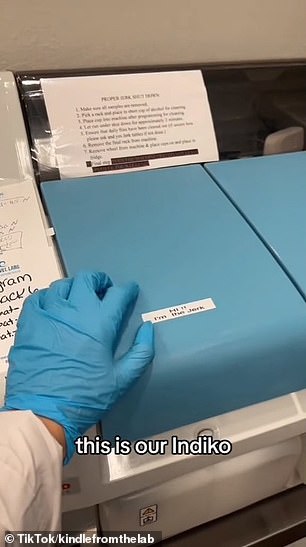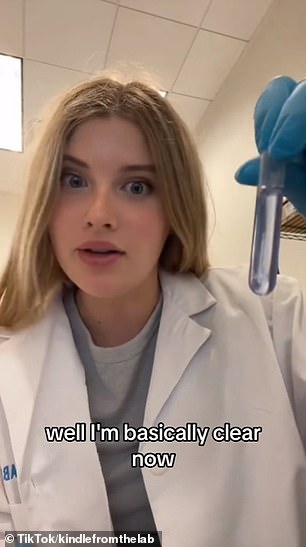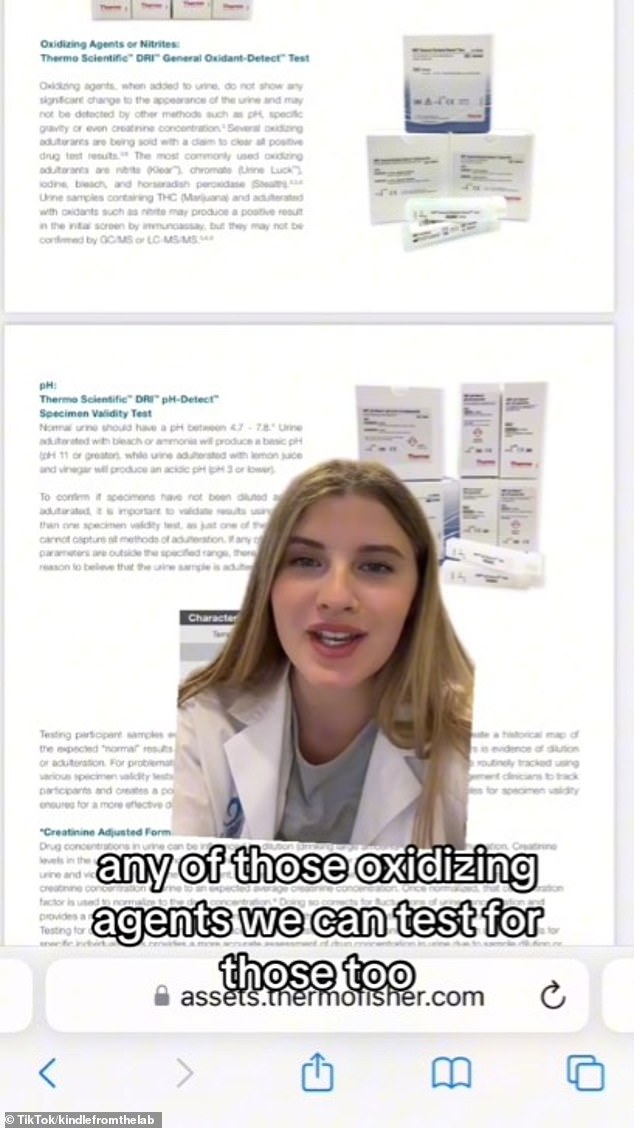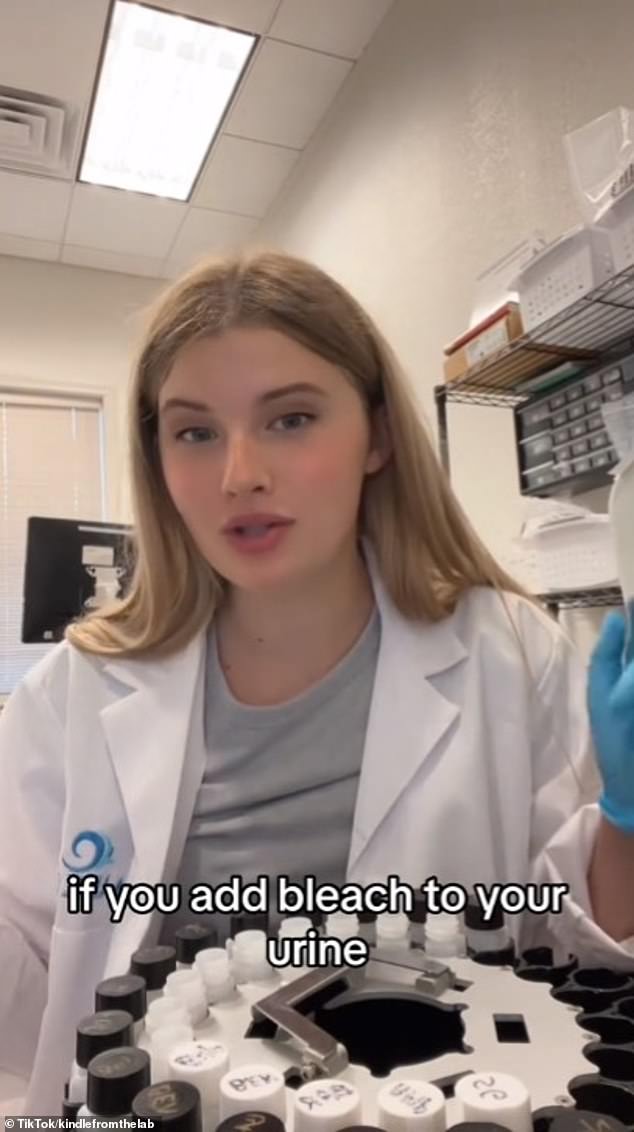I am a laboratory technician. These are the dumbest ways people have manipulated their urine samples to fake a drug test
A lab technician has revealed some of the most ridiculous ways people try to cheat on drug tests, from chugging water to contaminating urine samples with bleach.
TikTok user @kindlefromthelab, a technician at Sea Level Labs in Florida, made the shocking revelation in a viral clip that has been viewed more than 10 million times.
“Before you guys try to cheat on your drug test, y’all need to watch this video,” she joked.
The lab technician began by explaining that guzzling water or Gatorade before a test is essentially useless.
“We’re testing how much water you drink,” she said. ‘We test for specific gravity. The normal specific gravity of urine is between 1.003 and 1.030. So if you’re out of that range, a red flag will come up.”
TikTok user Kindlefromthelab, a technician based in Florida, revealed the shocking ways some people try to ‘cheat’ on drug tests


The laboratory technician showed viewers the Indiko clinical chemistry analyzer (left), which calculates the concentration of certain substances in body fluids. She explained that chugging water would indicate that a sample had been manipulated by increasing its specific gravity
The technician explained that the specific gravity of water is 1,000, “and if you’re chugging it, your urine will also be 1,000.”
She also insisted on adding bleach – “what people do” – to a urine sample.
The typical pH of urine is between 4.5 and 8.0, but bleach increases this, indicating that a sample has been tampered with.
In addition to testing for pH, she explained, technicians also test for creatinine in the urine. Creatinine is a chemical waste product that results from the digestion of proteins in food and the normal breakdown of muscle tissue.
“Anything under 20 is considered dilute, and anything under 2 is considered straight, not urine,” she said. “So if you’re drinking a ton of water and your creatinine is below 20, that’s going to raise some red flags, buddy.”
The technician also discouraged people from adding oxidants such as nitrite, chromate and iodine to their urine.
Although several counterfeiters claim to have cleared all positive drug test results, she revealed that these messages can be misleading.
‘We can also test all these oxidants. So use precaution. Maybe you don’t want to do that,” she said.

The laboratory technology discouraged people from adding oxidants such as nitrite, chromate and iodine to their urine because such substances can be detected in a test

Adding bleach to a urine sample wouldn’t work either, she explained, because it would spike the sample’s pH.
The popular TikTok coincided with the release of an analysis of nearly 10 million drug tests across the country.
The analysis, published on Wednesday by Quest diagnosisResearch found that the percentage of employees whose drug tests showed signs of tampering increased more than sixfold between 2022 and 2023.
Last year’s figure was the highest ever in more than 30 years of annual reporting, the survey found.
The increase in the number of replacement urine specimens increased by 633 percent year over year, while the number of invalid urine specimens increased by 45.2 percent among the general working population.
“A result of replaced or invalid indicates that a specimen has been tampered with in an attempt to conceal drug use,” the study read.
The analysis found that the high rate of replacement or invalid specimens coincides with the highest rate of drug positivity in more than two decades, an increase of more than 30 percent from an all-time low of 3.5 percent between 2010 and 2012.
“The increased number of substitutions and voids indicates that some U.S. workers are going to great lengths to try to undermine the drug testing process,” said Suhash Harwani, Senior Director of Science for Workforce Health Solutions at Quest Diagnostics.
“Given the growing acceptance and use of some drugs, especially marijuana, it may not be surprising that some people feel it necessary to attempt to manipulate a drug test.”
Marijuana positivity among the general workforce has increased 45.2 percent since 2019. However, it fell 3.1 percent year-over-year among the “federally mandated safety-sensitive workforce,” which includes professions like healthcare.
“The federally mandated, safety-sensitive population has a lower drug positivity rate, likely due to the fact that there is less drug use when there is an expectation of drug testing,” Harwani explained.
The analysis found that marijuana positivity remained the same year after year in states where recreational use is allowed, but declined in states where only medical marijuana is legal.
In states where marijuana is fully criminalized, positivity rates fell 6.7 percent from 2022 to 2023. remained the same for five years.
